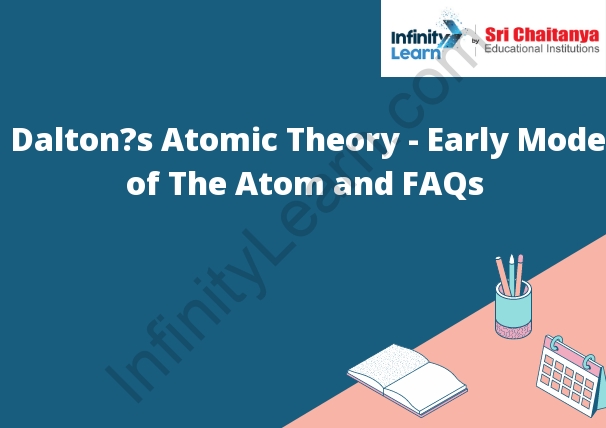Table of Contents
Dalton’s Early Model of The Atom
Dalton’s atomic theory is a model of the atom that was first proposed by John Dalton in 1808. Dalton’s atomic theory is based on the idea that atoms are tiny, indivisible particles that make up all matter. Dalton’s atomic theory also states that atoms are not changed by chemical reactions, and that atoms of different elements have different masses.

Dalton’s Atomic Model
Dalton’s atomic model is a model of the atom in which the atom is composed of small particles called atoms. Dalton proposed that atoms are indivisible and that atoms of different elements have different masses. Dalton also proposed that atoms of the same element are identical and that atoms combine to form molecules.
Postulates of Dalton’s Atomic Theory
The postulates of Dalton’s atomic theory are:
1. Elements are made of atoms.
2. Atoms are indivisible and indestructible.
3. Atoms of the same element are identical.
4. Atoms of different elements are different.
5. Chemical reactions involve the rearrangement of atoms.
Limitations of Dalton’s Atomic Theory
Dalton’s atomic theory has several limitations.
1) Dalton’s atomic theory is based on the idea that atoms are indivisible and indestructible. However, modern science has shown that atoms can be divided into subatomic particles (protons, neutrons, and electrons).
2) Dalton’s atomic theory does not account for the structure of the atom. Modern science has shown that the atom is made up of protons, neutrons, and electrons, which are arranged in shells and orbitals.
3) Dalton’s atomic theory does not account for the behavior of atoms in chemical reactions. Modern science has shown that atoms can exchange electrons to form chemical bonds.
Influences on Modern Atomic Theory
The modern atomic theory is based on the work of many scientists over many years. However, there are a few key figures whose work was essential in developing the theory.
John Dalton
John Dalton was an English chemist and physicist who is best known for his work on the modern atomic theory. Dalton developed the theory in the early 1800s, based on his observations that all atoms of a given element are identical and that atoms combine in fixed ratios to form molecules. Dalton’s atomic theory was a major breakthrough in understanding the nature of matter and laid the foundation for modern atomic theory.
Niels Bohr
Niels Bohr was a Danish physicist who made important contributions to the development of quantum mechanics and the modern atomic theory. Bohr developed the Bohr model of the atom, which describes the atom as a small, positively charged nucleus surrounded by orbiting electrons. Bohr’s model helped to explain the structure and behavior of atoms in terms of quantum mechanics and is still widely used today.
Ernest Rutherford
Ernest Rutherford was a New Zealand-born physicist who is considered the father of nuclear physics. Rutherford performed many groundbreaking experiments on the structure of the atom, including the famous gold foil experiment in which he demonstrated that the atom has a small, dense nucleus at its center. Rutherford’s work helped to establish the nuclear model of the atom and paved the way for the development of nuclear weapons and energy.






